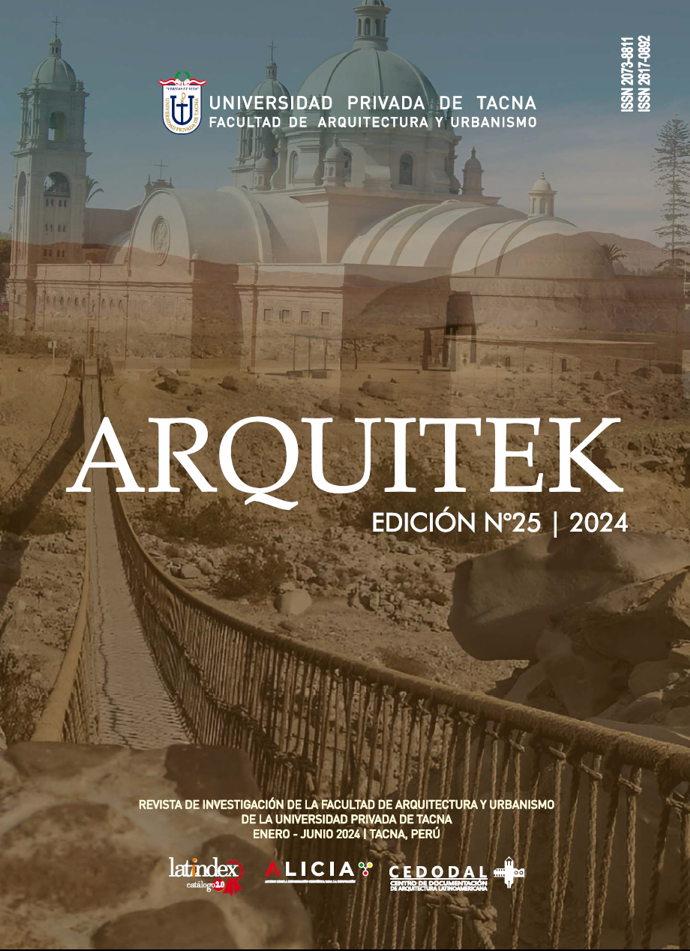Layout of the half-buried Prehispanic temple in cerro Baúl, Moquegua-Peru and its relationships with the landscape. 2023
DOI:
https://doi.org/10.47796/ra.2024i25.924Keywords:
pre-hispanic settlement, ceremonial landscape, pre-hispanic planningAbstract
The present study on the so-called semi-buried temple of the pre- Hispanic settlement (600 - 750 BCE) located in the district of Torata, a rural area on the upper plateau of Cerro Baúl, Moquegua- Perú, in the western sector , proposes the hypothesis that this set of two spaces is built from its geographical enclave where it is located, developing a way of inhabiting the pre-Hispanic ceremonial landscape in Cerro Baúl from the relationships with its natural environment and the stars, specifically the sun. which is culturalized and conceptually built in this architectural complex, giving it a domicile and cultural, programmatic meaning in the desert landscape of today's southern Peru.
The architectural and territorial scale serves to contain a technical framework, with a focus on the design and planning of the layout, applying a reconstructive and perceptual analytical method, within the interpretive paradigm.
Downloads
Downloads
Published
How to Cite
Issue
Section
License
Copyright (c) 2024 Esteban Balcarce Villanueva

This work is licensed under a Creative Commons Attribution 4.0 International License.




